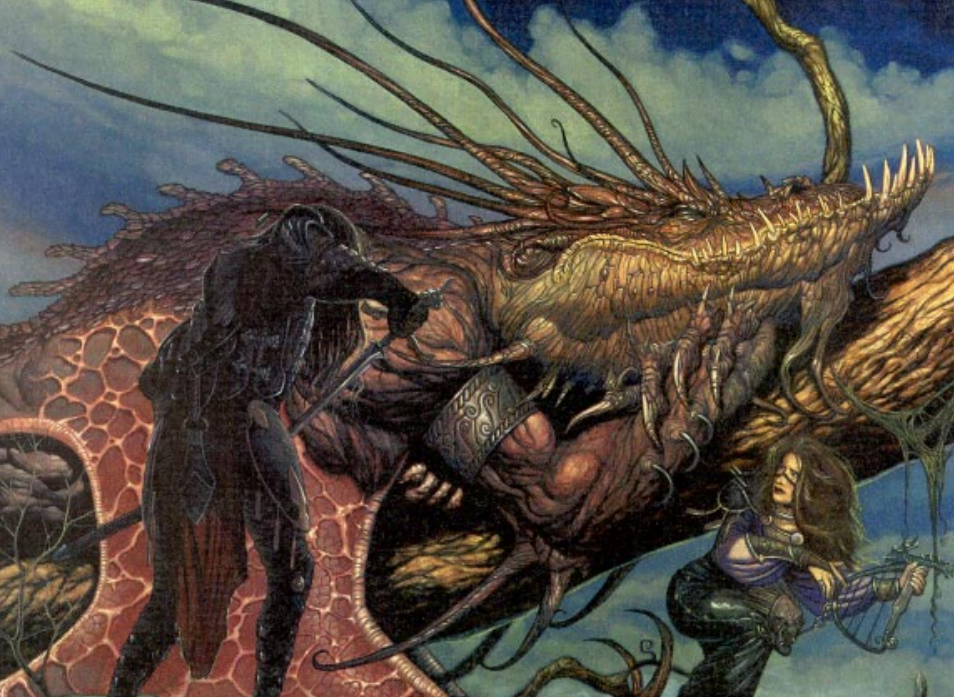In contrast with Monte Cook’s previous articles for Dragon Magazine, which built out Planescape’s lore in a way that felt useful and almost necessary, “Modron Magic: The Sorcery of Structure” is an example of why I didn’t much care for these magazines as a kid. Well ok, mostly it was because I couldn’t afford them, but beyond that the addition of new spells, abilities, and items never really interested me. Compared with storylines, these are easy to come up with as a DM. At the same time, bringing one of these magazines to a session and telling your DM you wanted to use a new modron spell seems like a great way to be shut down. So whether you’re a PC or DM, either way this type of information barely seems to add to the game, and so goes easily ignored. It’s not a bad article, but if it were lost completely to the past the result would be hardly noticeable.
The fundamental idea behind this article is actually quite good. Chaos magic, both within D&D and the real world, is a long-established concept. So then why isn’t there lawful magic? Cook names this form of sorcery Truphysik, but unfortunately he only has a few pages to explore this concept. The meat of “Modron Magic” consists of 10 new items and four new spells. In essence, this gives DMs some new items to feature or perhaps use as treasure in the midst of The Great Modron March. However, since these aren’t established beforehand, they’re not actually included in the adventure, which makes for a bit of awkwardness. I should also note that unlike so much of Planescape this article requires statistics in order to illustrate the cost and effectiveness of these new magical wonders, and while converting things to fifth edition or Pathfinder wouldn’t be particularly difficult, it adds yet another hurdle in the way of using this in a contemporary adventure.
Not that the ideas within here are bad. Some of the magical items are quite cool, and I want to single out a few of these that might be worth dragging into your campaign. The Clockwork Spinsword is a weird apparatus with four blades that’s basically a hand-held combine harvester… of limbs. The Crystal of Clear Focus is a quite worthwhile treasure I can see adventurers seeking out for various reasons, and the Magnetic Clamp is basically everything you’d hope it would be. None of these are vital, but they give a bit of insight into the modrons and how they function, and some of the other items such as the Truebridge and Flying Harness fit well into any campaign using TGMM. Unnecessary, sure, but it’s all pretty fine and neither game-breaking nor dull.
The spells included here are a little worse. Set the Path involves declaring future actions for future benefits, and given how small these benefits are and that it’s second level I can’t imagine it ever being actually chosen by a Wizard. True Arrow of Law is fine but unsurprising, Correlate Data feels possibly game-breaking or at least annoying for DMs, and Harmony is powerful but only useful in very particular circumstances. *shrug*.
The article then ends with advice about using modrons in non-Planescape campaigns or implementing TGMM in ongoing campaigns. I suspect this came at the behest of Wizards of the Coast, who note at the end of the issue in a section about their future plans for campaign settings that “The Planescape and Birthright settings . . . will receive support while management gauges their profitability.” In a way, this is the beginning of the end for the setting, and while it had a better death than Birthright did, you can already see the writing on the wall.1
And that’s really it. Unlike some issues of Dragon that I would recommend to any Planescape fans, this one can be safely skipped. Given the short length of this article, I’m going to use the remaining space here to recommend you give a look at what Xanxost, the slaad narrator from Faces of Evil: The Fiends has been up to since accidentally landing in our universe.
1. Also notable is the article’s claim that, “Yes, a new AD&D campaign setting will appear based on Dominia, the world of Magic: The Gathering. But it won’t require Magic cards to play, and it won’t affect the core AD&D rules. No publication date has been set.” This claim was indeed proven true, though it wouldn’t be until nearly 20 years and several game editions had been left behind.




